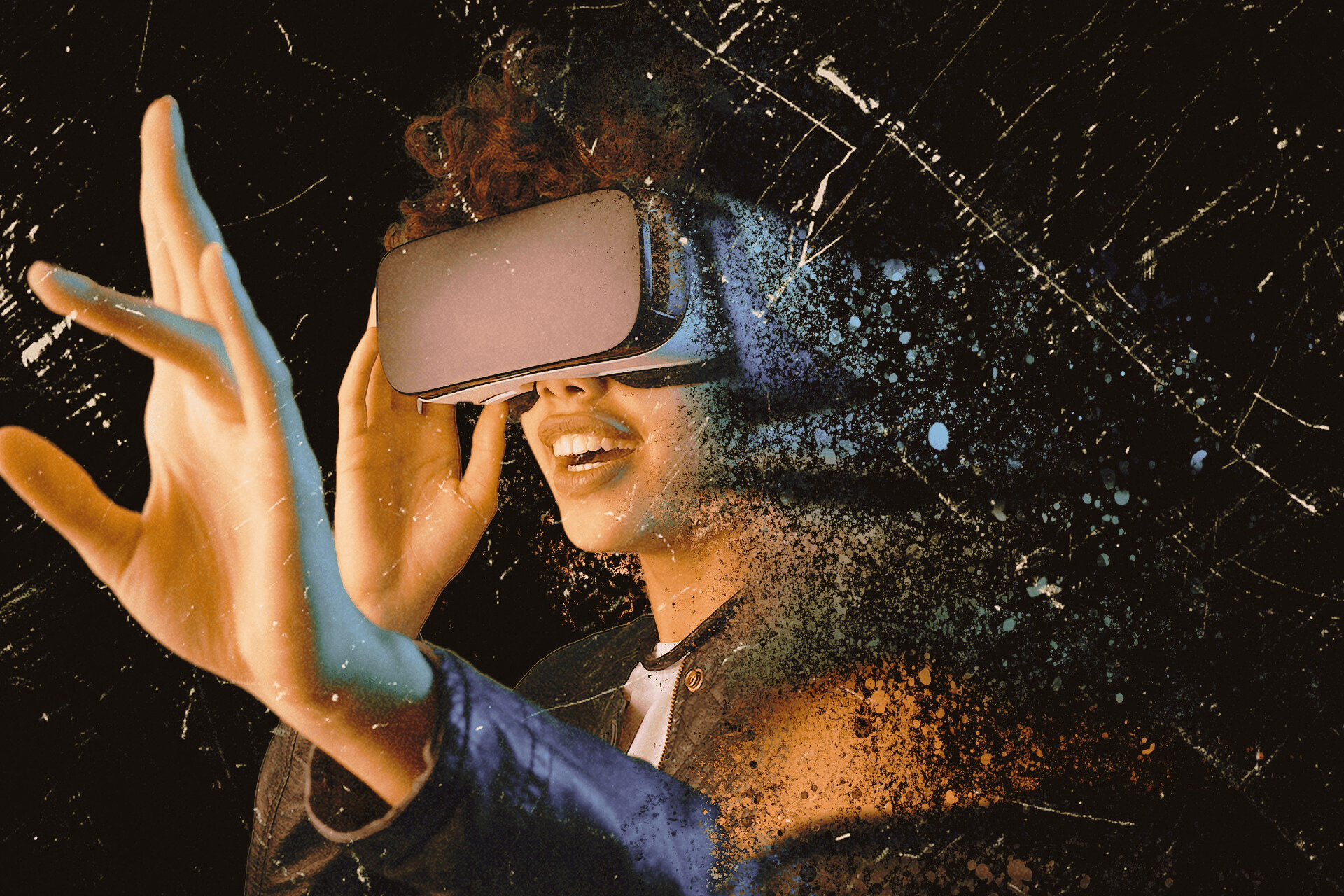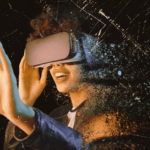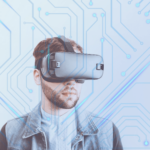Table of Contents
ToggleIntroduction
The Future of Augmented Reality Technology: A Comprehensive Outlook. In recent years, augmented reality (AR) has emerged as a groundbreaking technology, blurring the lines between the physical and digital worlds.
From enhancing gaming experiences to revolutionizing industries like healthcare and education, the potential applications of AR are vast and diverse.
In this article, we delve into the future of augmented reality technology, exploring its evolution, current capabilities, and what lies ahead.
Define Augmented Reality
Augmented reality refers to the technology that overlays digital information, such as images, videos, or 3D models, onto the real world through devices like smartphones, tablets, or specialized AR glasses.
Unlike virtual reality, which immerses users in entirely virtual environments, AR enhances the existing environment by adding virtual elements.
Importance of Augmented Reality
The significance of augmented reality lies in its ability to enhance human perception and interaction with the surrounding environment.
By seamlessly integrating digital content into real-world settings, AR has the potential to revolutionize various industries, including gaming, entertainment, retail, healthcare, manufacturing, and education.
Development and Impact of Augmented Reality
Evolution of Augmented Reality
Augmented reality technology has evolved significantly since its inception. From early experiments in the 1960s to the development of AR-enabled smartphones in the 21st century, the journey of AR has been marked by continuous innovation and refinement.
Impact on Industries
Augmented reality has already made a profound impact on several industries, unlocking new possibilities and transforming traditional processes.
In the gaming industry, AR games like Pokémon Go have captured the imagination of millions of players worldwide, blending virtual creatures with real-world environments.
Technical Specifications of Augmented Reality Devices
Hardware Requirements
Augmented reality devices typically consist of sensors, cameras, processors, and displays capable of rendering digital content in real-time.
While early AR experiences relied primarily on smartphones and tablets, dedicated AR glasses and headsets are becoming increasingly common.
Software Components
AR software plays a crucial role in processing real-world data, tracking user movements, and rendering virtual objects.
Advanced algorithms enable seamless integration of digital content with the physical environment, ensuring a smooth and immersive AR experience.
Applications of Augmented Reality
Gaming and Entertainment
In the gaming and entertainment industry, augmented reality offers unique opportunities for interactive storytelling and immersive experiences.
From gamified fitness apps to AR-enhanced theme park attractions, the possibilities for creative expression are endless.
Retail and E-Commerce
Augmented reality is reshaping the retail landscape by enabling virtual try-on experiences, interactive product demonstrations, and personalized shopping recommendations.
With AR, consumers can visualize furniture in their homes before making a purchase or try on virtual makeup to see how it looks on their faces.
Benefits of Augmented Reality Technology
Enhanced User Experience
One of the primary benefits of augmented reality technology is its ability to enhance user experiences by providing contextual information and interactive content.
Whether navigating unfamiliar streets with AR-powered navigation apps or exploring educational content through AR simulations, users can engage with digital content in meaningful ways.
Improved Productivity and Efficiency
In industrial settings, augmented reality can improve productivity and efficiency by providing real-time access to information, instructions, and visualizations.
Maintenance technicians, for example, can use AR glasses to overlay repair instructions onto machinery, reducing downtime and minimizing errors.
Challenges and Limitations of Augmented Reality
Technical Challenges
Despite its potential, augmented reality technology still faces several technical challenges, including limitations in hardware capabilities, accuracy of spatial tracking, and integration with existing infrastructure.
Achieving seamless occlusion, where virtual objects appear to interact realistically with real-world elements, remains a significant challenge in AR development.
Privacy and Ethical Concerns
As augmented reality becomes more pervasive in everyday life, concerns about privacy, security, and ethical use have emerged.
AR applications that collect and process sensitive user data raise questions about data privacy and consent, highlighting the need for robust regulations and ethical guidelines.
Latest Innovations in Augmented Reality
Spatial Computing
Spatial computing, which combines augmented reality, virtual reality, and artificial intelligence, represents the next frontier in human-computer interaction.
By understanding the spatial context of users’ environments, spatial computing systems can deliver more immersive and intuitive experiences.
Wearable AR Devices
Advancements in wearable AR devices, such as augmented reality glasses and headsets, are driving adoption across various industries.
Companies like Microsoft, Google, and Apple are investing heavily in AR hardware development, aiming to create lightweight, stylish, and user-friendly devices that seamlessly integrate into everyday life.
Future Prospects of Augmented Reality
Integration with 5G and Edge Computing
The rollout of 5G networks and edge computing infrastructure will enable faster data transmission and lower latency, unlocking new possibilities for augmented reality applications.
With 5G connectivity, AR experiences can deliver real-time interactions and high-fidelity content streaming, enhancing immersion and responsiveness.
Augmented Reality Cloud
The concept of an augmented reality cloud, where digital content is hosted and rendered in the cloud and streamed to AR devices on-demand, holds promise for scalable and collaborative AR experiences.
By offloading processing tasks to the cloud, AR devices can deliver rich and dynamic content without requiring powerful onboard hardware.
Comparative Analysis with Other Technologies
Augmented Reality vs. Virtual Reality
While augmented reality and virtual reality share some similarities, they serve distinct purposes and offer different user experiences.
Virtual reality immerses users in entirely virtual environments, whereas augmented reality overlays digital content onto the real world. Both technologies have unique applications and advantages depending on the use case.
Augmented Reality vs. Mixed Reality
Mixed reality is a spectrum that encompasses both augmented reality and virtual reality experiences, blending elements of the physical and digital worlds.
Unlike traditional AR, mixed reality experiences enable virtual objects to interact with real-world surfaces and respond to user interactions more convincingly.
User Guides and Tutorials for Augmented Reality
Getting Started with Augmented Reality
To experience augmented reality, users need compatible devices and AR-enabled applications. Most modern smartphones and tablets support AR functionality, allowing users to access a wide range of AR apps from app stores.
For a more immersive AR experience, dedicated AR glasses or headsets offer hands-free interaction and enhanced visual fidelity.
Creating Augmented Reality Content
For developers and content creators interested in building AR experiences, there are various tools and platforms available, such as Unity3D, Unreal Engine, and ARKit/ARCore.
These tools provide libraries, APIs, and development frameworks for creating interactive AR content, ranging from simple animations to complex simulations.
Frequently Asked Questions (FAQs)
1. What is augmented reality (AR)?
Augmented reality (AR) is a technology that overlays digital information, such as images, videos, or 3D models, onto the real world through devices like smartphones, tablets, or specialized AR glasses.
2. How is augmented reality different from virtual reality?
Augmented reality enhances the existing environment by adding virtual elements, while virtual reality immerses users in entirely virtual environments.
3. What are some usual applications of augmented reality?
Common applications of augmented reality include gaming, entertainment, retail, healthcare, manufacturing, and education.
4. What are the hardware requirements for experiencing augmented reality?
Augmented reality devices typically consist of sensors, cameras, processors, and displays capable of rendering digital content in real-time.
5. Are there any privacy concerns associated with augmented reality?
As augmented reality becomes more pervasive, concerns about privacy, security, and ethical use have emerged, particularly regarding the collection and processing of sensitive user data.
6. How can I get started with augmented reality?
To experience augmented reality, users can use compatible devices such as smartphones or tablets and download AR-enabled applications from app stores.
Alternatively, dedicated AR glasses or headsets offer a more immersive experience.
7. Can I create my own augmented reality content?
Yes, developers and content creators can use tools and platforms like Unity3D, Unreal Engine, and ARKit/ARCore to create interactive AR content, ranging from simple animations to complex simulations.
8. What are the prospects of augmented reality?
The future of augmented reality looks promising, with advancements in hardware, software, and user experience design driving innovation across industries.
As AR becomes more integrated into everyday life, it has the potential to reshape how we work, play, learn, and interact with the world around us.
Conclusion
Augmented reality technology holds immense potential to transform various aspects of our lives, from entertainment and gaming to healthcare and education.
By understanding the fundamentals of AR and staying updated on the latest developments, individuals and businesses can harness the power of this revolutionary technology to create impactful experiences and drive innovation.









